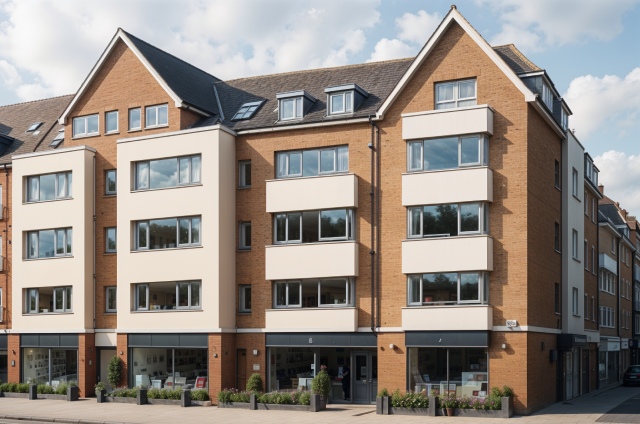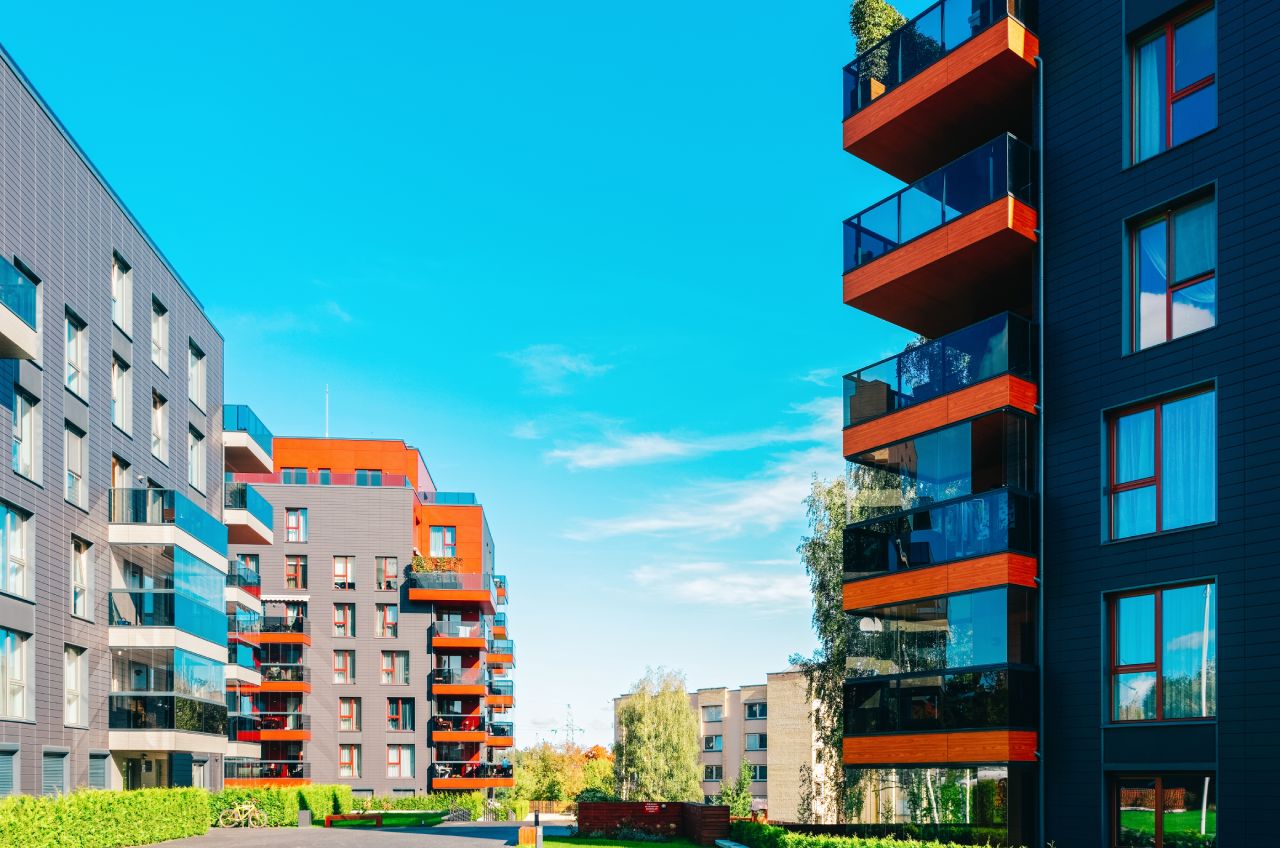The UK property landscape is shifting.
With office vacancies in major cities rising by up to 20% since 2020, astute investors and developers are spotting a golden opportunity: commercial to residential conversions.
But is finance available for such projects? The answer is a resounding yes, and this guide will show you how.
Commercial to residential conversions involve transforming non-residential buildings, such as offices or retail spaces, into homes.
This trend has gained momentum, particularly since the 2021 amendments to permitted development rights, which have eased the process of repurposing certain commercial properties.
Read on as we explain the funding options, from bridging loans to development finance. Whether you’re considering that empty high street shop or planning to breathe new life into an old warehouse, this guide will equip you with the knowledge to get your project started.
Jump To: Financing Options for Commercial to Residential Conversions
Understanding Commercial to Residential Conversions
Successful commercial to residential conversions can be found across the UK.
For instance, many former warehouses, factories, and office buildings have been transformed into sought-after apartments in cities like London, Manchester, and Bristol. These projects often retain original features such as high ceilings, large windows, and exposed brickwork, creating unique living spaces that appeal to modern urban dwellers.
Such conversions not only provide much-needed housing but also contribute to urban regeneration by repurposing underutilized buildings. They demonstrate how developers can create value by reimagining commercial spaces for residential use.
However, these projects come with challenges.
You’ll need to address building regulations, tackle potential structural issues, and ensure the space meets residential standards for light, ventilation, and safety. With careful planning and appropriate finance, these obstacles can be overcome.
Planning Permission and Permitted Development Rights
Before getting too deep into your conversion project, it’s important to understand the legal requirements.
In the UK, buildings are categorised into Use Classes, which determine their permitted use. Most commercial properties fall under Class E, while residential properties are in Class C.
Permitted Development Rights (PDRs) allow certain changes of use without full planning permission. The introduction of Class MA in 2021 has simplified the conversion of Class E properties to residential use.
However, PDRs come with conditions, such as size limits and prior approval requirements.
To assess if your project might qualify under PDR, consider these questions:
- Is the building currently in Class E use?
- Has it been vacant for at least three months?
- Is the total floor space under 1,500 square metres?
If you’ve answered yes to all these, your project might be eligible for PDR. However, always check with your local planning authority, as rules can vary by location.
Types of Permitted Development
Permitted Development Rights (PDR) streamline certain commercial to residential conversions. The most relevant is Class MA, introduced in 2021, allowing changes from commercial, business, and service uses (Class E) to residential use (Class C3) for properties up to 1,500 square metres.
Class G permits conversion of shops or betting offices to a single flat above ground floor, while Class M allows larger retail spaces up to 150 square metres to be converted. Class PA enables light industrial to residential conversions, useful for transforming warehouses or workshops.
While these PDRs simplify the process, they still require prior approval from local authorities. This approval considers factors like transport impacts, parking, noise, contamination risks, and effects on local character.
What is prior approval?
Prior approval is a process required for certain types of permitted development, allowing local planning authorities to consider the potential impacts of proposed changes before they’re implemented.
This applies to various developments, including home extensions, creation of new dwellings from commercial properties, and changes of use between different building classes.
The process ensures that while these developments don’t need full planning permission, they still meet specific criteria and don’t adversely affect the local area.
To apply for prior approval, developers must provide detailed information about their proposal, including its eligibility under permitted development rights, site history, and how it addresses specific matters such as transport impacts or fire safety.
Work cannot commence until the local planning authority has issued its determination, and in some cases, if the authority doesn’t respond within the specified timeframe (typically 8 weeks), the development may receive ‘deemed consent’.
After the determination you can apply for a Lawful Development Certificate (LDC) from your local planning authority and begin the conversion process.
Read more: https://www.planningportal.co.uk/planning/planning-applications/consent-types/prior-approval
Let’s talk development finance!
Financing Options for Commercial to Residential Conversions
As you are buying a commercial property, the natural option would be to apply for a commercial mortgage.
Sadly, this won’t be possible for a conversion project.
Commercial mortgages are designed for properties that will remain in commercial use, not for those undergoing significant changes. Lenders offering commercial mortgages expect the property to generate business income immediately, which won’t be the case during a conversion.
Instead, developers need to look at specialised financing options that cater to the unique nature of conversion projects. These options offer shorter terms, higher flexibility, and take into account the changing value of the property throughout the development process.
Let’s explore the most common financing solutions for commercial to residential conversions.
Bridging Loans for Property Conversion
Bridging loans are short-term financing solutions that can be ideal for property conversions. They’re designed to cover the gap between purchasing a property and either selling it or refinancing with a long-term mortgage.
These loans typically last from a few months to two years and can be arranged quickly – often within weeks. Interest rates are higher than standard mortgages, usually starting from around 0.5% per month, but the speed and flexibility can make them worthwhile for the right project.
For instance, a developer in Manchester used a £500,000 bridging loan to purchase and convert a former pub into five flats. The loan term was 12 months, allowing time to complete the works and sell the units.
Bridging finance tends to just offer funds upfront for the initial purchase, so you will need to have the money to pay for the conversion costs.
Bridging loans can be an excellent choice if you need to act swiftly, such as for auction purchases. However, they require a clear exit strategy, typically either the sale of the converted property or refinancing onto a long-term mortgage.
explore bridging loansDevelopment Finance for Larger Conversion Projects
For more extensive conversions, development finance might be more suitable. This type of funding is designed specifically for property development projects and can cover both the purchase price and conversion/construction costs.
UK lenders typically offer development finance based on two key ratios:
- Loan-to-Cost (LTC): Usually up to 70-75% of the total project cost.
- Loan-to-Gross-Development-Value (LTGDV): Often up to 65% of the expected value of the completed project.
For example, if you’re planning to convert an office building in Birmingham into 20 apartments, with a purchase price of £2 million and conversion costs estimated at £1 million, you might secure a loan of £2.25 million (75% LTC) or £3.25 million (65% LTGDV), whichever is lower.
Development finance is released in stages as the project progresses, with regular site inspections to monitor progress. You will receive an initial payment to purchase the building, followed by agreed stage payments.
This approach helps manage cash flow and reduce risk for both the developer and the lender.
If this is your first project then you will need to find a lender offering First Time Property Developer Finance. These schemes are better suited to first-time developments.
explore development financeAlternatives
While bridging loans and development finance are the most common options, they’re not the only ones.
Joint venture partnerships, where you team up with other investors or developers, can be a way to pool resources and share risks.
Mezzanine finance, which sits between senior debt and equity, can help fill funding gaps. It’s more expensive than traditional lending but can allow you to take on larger projects with less personal capital.
Crowdfunding has also emerged as an option in the UK property market.
Platforms like London House Exchange (Property Partner) allow individuals to invest in property developments, including conversions. In 2019, a commercial to residential conversion project in Ilford, London raised over £200,000 through crowdfunding.
Each of these methods has its advantages and drawbacks, and the best choice will depend on your specific project, experience, and financial situation.

Key Considerations for a Successful Conversion Project
The success of your conversion project – and your ability to secure finance – depends on various factors. Location is vital; a conversion in a thriving city centre will likely be more attractive to both lenders and potential buyers or tenants than one in a declining area.
Accurate cost estimation is crucial. Conversion projects can often uncover unexpected issues, so build in a contingency of at least 10-20% of your budget.
UK building regulations for residential properties are stringent, particularly around fire safety, energy efficiency, and sound insulation. Ensure your plans comply with all relevant regulations from the outset.
Consider the end-user of your converted property. If you’re creating apartments, what facilities will young professionals or families in the area expect? If it’s student accommodation, what are the specific requirements for Houses in Multiple Occupation (HMOs)?
Commercial to residential conversions offer a unique opportunity for small and medium-sized developers to make their mark on the UK property market.
While major homebuilders often focus on large-scale, ground-up developments, these conversion projects allow nimble investors and developers to breathe new life into existing urban spaces.
By repurposing underused commercial buildings, developers can create distinctive homes, address housing shortages, and contribute to the revitalisation of town and city centres across the UK.
Is Commercial to Residential Conversion Right for You?
Commercial to residential conversions offer exciting opportunities for property developers and investors in the UK.
With the right project, location, and financing, these conversions can be highly profitable while also contributing to urban regeneration and addressing housing shortages.
However, they’re not without challenges.
You’ll need to address complex regulations, manage significant budgets, and be prepared for unexpected issues along the way. Careful planning, thorough research, and expert advice are essential.
Further reading: https://resi.co.uk/advice/planning-permission/
Need some help?
If you need a bridging loan or development finance then a specialist broker is a good place to start. You will get expert help and advice along with a wide range of lenders to choose from.
To get matched with a specialist broker, please call us on 0330 030 5050.




